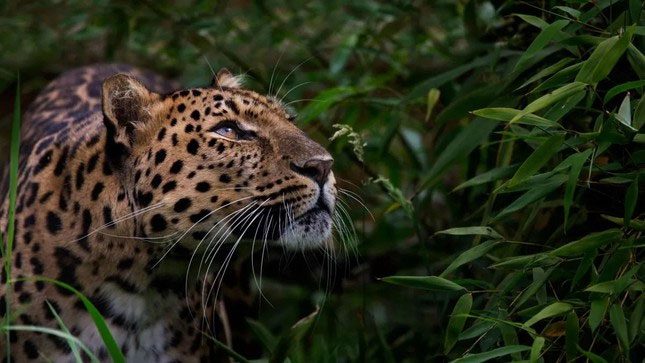Throughout Earth’s history, there have been five mass extinction events, and many experts are warning that a sixth mass extinction may be underway due to human activities since the Age of Exploration.
Some scientists even suggest that nearly 40% of species currently residing on our planet could face extinction as early as 2050.
Increasing Species Mortality
Nic Rawlence, director of the Otago Ancient DNA Laboratory and a senior lecturer in ancient DNA at the Department of Zoology at the University of Otago in New Zealand, asserts that a sixth mass extinction is imminent.
Rawlence states: “If species do not go extinct globally, those that cannot adapt to our rapidly changing world are likely to experience range contractions, local extinctions, and functional extinctions. The current extinction crisis is likely to occur if we do nothing to stop it.”

The Amur leopard is on the brink of extinction, with only 70 individuals remaining in the wild.
According to the International Union for Conservation of Nature (IUCN) Red List of threatened species, approximately 41,000 species—nearly one-third of all assessed species—are currently at risk of extinction.
According to IUCN and the World Wide Fund for Nature (WWF), many well-known species and subspecies—including the Sumatran orangutan (Pongo abelii), Amur leopard (Panthera pardus orientalis), Sumatran elephant (Elephas maximus sumatranus), black rhinoceros (Diceros bicornis), hawksbill sea turtle (Eretmochelys imbricata), and Sunda tiger—are at risk of extinction.
The IUCN describes critically endangered status as species facing extremely high extinction risk due to population declines of 80% or more over the past 10 years (or three generations), current populations of fewer than 50 individuals, or other factors.
Many of these species are so severely threatened that they may not survive until 2050. For example, only 70 Amur leopards remain in the wild, while the vaquita (Phocoena sinus), believed to be the rarest marine mammal, has only 10 individuals left, according to WWF.
Numerous lesser-known species are also in danger. A 2019 assessment published in the journal Biological Conservation found that over 40% of insect species are currently at risk of extinction.
Insect species listed as “critically endangered” by the IUCN include: white-headed grasshopper (Chorthippus acroleucus), South Alpine bush cricket (Anonconotus apenninigenus), Swanepoel’s blue butterfly (Lepidochrysops swanepoeli), Franklin’s bumblebee (Bombus franklini), Franklin’s mining bee, and Seychelles wingless grasshopper (Procytettix fusiformis).
Similar alarming predictions about severe declines are present across nearly all life on Earth. According to a 2018 report from the Intergovernmental Panel on Climate Change (IPCC), over 90% of the world’s coral reefs could die by 2050, even if global warming is limited to 1.5 degrees Celsius.
A recent IPCC report indicates that by the early 2030s, a global temperature increase of 1.5 degrees Celsius could result in 99% of the world’s coral reefs experiencing frequent heatwaves that prevent recovery. By 2050, over 90% of the world’s coral reefs could be dead.
According to a 2022 report published in the journal Nature, two out of five amphibian species (40.7%) are currently at risk of extinction, while a 2016 report published in Biology Letters stated that by 2050, 35% of frog species in the humid tropics of Queensland, Australia, “could face extinction.”
In reality, the collapse of amphibian species may be even more pronounced. Scientists acknowledge that there are many amphibian species for which they have struggled to gather detailed information, and these species are classified as data deficient (DD). According to a report published in 2022 in Communications Biology, “85% of DD amphibian species are likely to be threatened with extinction, as well as more than half of DD species across various taxonomic groups, such as mammals and reptiles.”
Consequently, it is challenging to accurately determine the number of species that may go extinct by 2050, largely due to the scale of extinction still being undetermined. Furthermore, we do not know how many species currently exist.
While extinction occurs naturally—over 99% of all species that have ever existed are extinct—human activity can accelerate the extinction rate of species, a notion close to Rawlence, a New Zealander.
He states: “Island ecosystems are perfect examples to illustrate this. They are isolated and often contain high levels of endemism (i.e., unique wildlife). New Zealand has dropped from around 230 bird species at the time humans arrived to about 150 species today—losing around 80 bird species.”
Many species, given enough time, could adapt to climate changes and alterations in their natural environments. A portion of a 2021 study published in Trends in Ecology & Evolution found that some animal species “are changing their morphology” to better cope with climate change, with some bird species appearing to be the most adaptable. According to the study, some Australian parrot species have evolved to have larger beak sizes over the past 150 years, an adaptation that allows them to better regulate internal temperatures.
However, with human activity accelerating climate change and habitat destruction, some of the most vulnerable species are likely to bear the brunt and may not be able to adapt.
What Can We Do to Prevent This?
With so many species facing extinction, what can we do to prevent the worst-case scenario?
Of course, there are organizations, researchers, and projects with dedicated missions aimed at slowing or even halting human-related climate change. Climeworks, a company based in Switzerland, is a pioneer in carbon dioxide air capture technology, aiming to build a series of facilities capable of permanently removing CO2 from the atmosphere. Its first plant opened in Iceland in 2021.
Elsewhere, Project Drawdown, established in 2014, is a nonprofit organization seeking to connect experts worldwide to propose and test concepts for reducing greenhouse gases in the atmosphere, ultimately witnessing their decline, while the Stratospheric Controlled Perturbation Experiment, funded by Bill Gates, is currently assessing the feasibility of injecting non-toxic calcium carbonate (CaCO3) dust into the atmosphere to reflect sunlight and thereby offset—or significantly reduce—the impacts of global warming.





















































